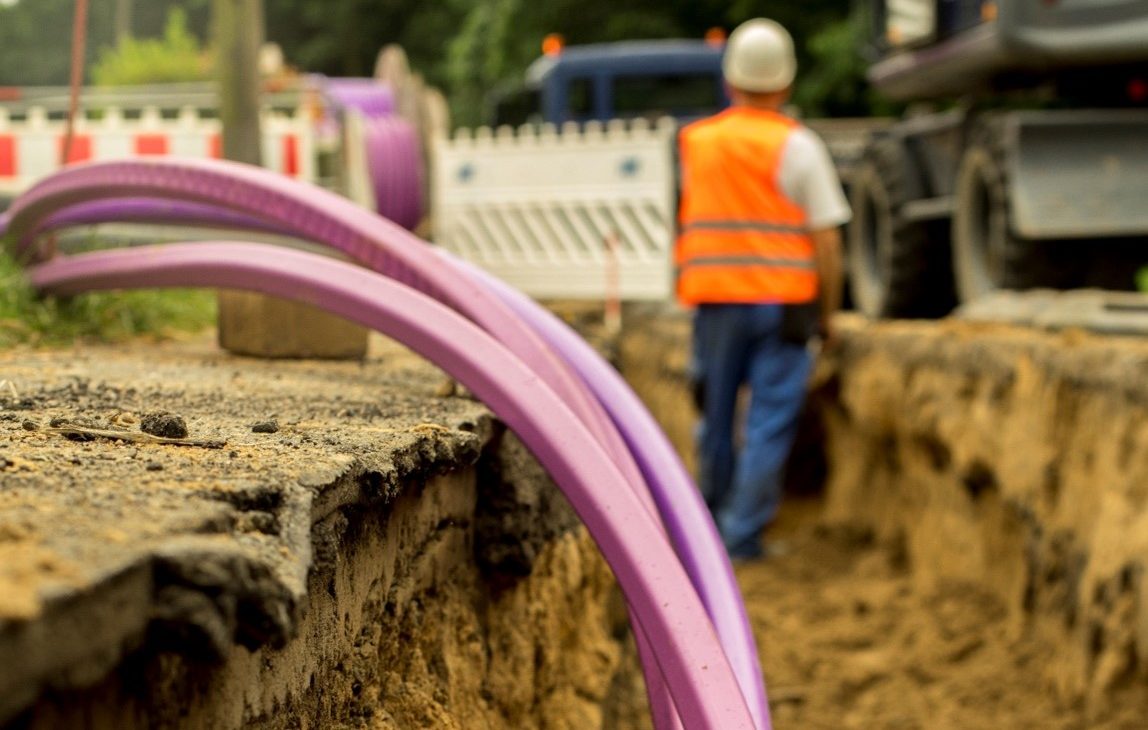Keen multifamily developers and their construction crews along with astute internet providers have new ways to win at supply chain chess when faced with material and labor shortages.
The multifamily new development and upgrade industries are fraught with tension these days. It’s like a game of chess between well-matched opponents. Player #1 is the global supply chain, making aggressive offensive moves to thwart Player #2, multifamily communities, builders, and consultants along with internet providers seeking to advance fast and reliable WiFi for smart communities. The endgame: Can Player #2 satisfy escalating multifamily demand for supreme internet like fiber given the cunning ways Player #1 tries to keep her from advancing across the board?
Analogies aside, the big unanswered question today in the multifamily market is: What should communities, builders, and consultants look for in an internet partner given the uncertain supply chain scenario? Who can they trust to strategize a way around today’s obstructions to deliver fiber fast and cost effectively?
“Orders that previously took two months can now take up to a year,” says Fernando Boza, senior director of supply chain for Quantum Fiber, a major fiber internet provider for multifamily communities. “The situation is very challenging.”
In our previous article, “Internet service providers, multifamily developers partner to tackle supply chain delays,” we explored how supply chain delays specifically impacted multifamily community owners’ and builders’ abilities to get much-needed fiber for residents who are increasingly demanding it.
In this blog, we’re going to see how leading service providers saw the dangers early on and were savvy–and nimble–enough to alter their business models to mitigate the potential risks. And we break down effective strategies that keen players (#2) are leveraging, including extending forecasting models from months to more than a year, bolstering the weak links in their supply chains, and building much more robust partnerships with suppliers and customers.
What cunning moves is Player #1 (the global supply chain) making?

The global supply chain is pursuing a savvy gambit of shutting down manufacturing around the world, causing shortages and backlogs of key supplies such as fiber and semiconductor chips. Indeed, such products are still (famously) unavailable. The global chip market has been in severe crisis for more than two years with industry participants projecting problems will persist well into the foreseeable future. And fierce competition from countries like China for fiber to upgrade its communications infrastructure is making that–as well as materials needed for its deployment–scarce.
Severely curtailing the supply of labor is another part of Player #1’s strategy. Shipping companies are impacted as they can’t locate sufficient licensed drivers and pilots. Other bottlenecks are omnipresent as the internet provider’s adversary shuts down ports and other transportation hubs.
Other disruptions are due to business decisions made by equipment manufacturers in previous years–attempts to cut costs, achieve operational efficiencies, or both. For example, many such businesses had earlier gone with strategic decisions to move to international suppliers and award all contracts in a node to a single source. This proved to be damaging as it created fragile, easily broken supply chains.
These are the obvious chess strategies everyone knows. But what many people are not familiar with is how fiercely national governments as well as different industries are vying for the same resources. Today, pretty much anything manufactured with a power cord requires a chip. Cars and internet modem manufacturers, for example, are in head-to-head competition, and many countries—particularly China—are aggressively foraging for ways to get their country connected with fiber as soon as possible, further limiting available supplies. As a competitive gambit, China has ramped up on building fiber-optic plants and has cornered the market on manufacturing fiber as well as the raw materials needed for such manufacturing.
How Player #2 (leading broadband providers) is winning the game.

Leading internet providers who predicted Player #1’s moves and then some, significantly altered their business models before Player #1 could disrupt their bottom lines. Because Quantum Fiber and a major fiber internet provider for multifamily communities in particular foresaw the need to do this early on, their businesses continue to thrive. In August 2022, Quantum Fiber announced plans to extend its fiber customer base by a whopping 12 million households.
Here are three of the ways that leading internet service providers are managing to be so agile and prepared to stay well ahead in the game.
1. Forecasting more accurately, and further ahead
According to Mr. Boza, key component shortages has caused Quantum Fiber to extend its forecasting and planning activities further into the future, from a six-month cycle to a 12-to-18-month timeframe.
As part of this forecasting model, Quantum Fiber is continually assessing its contractual relationships, and adjusting them when necessary, proactively identifying when it needs, for example, to fine tune multifamily community customers’ expectations or push out a project’s completion date due to labor or supply shortages. For multifamily community builders, this can involve factoring in projections to schedule pre-breaking-ground and installation dates more precisely.
2. Forging multiple flexible paths to successful project completion

A second way an astute player like Quantum Fiber is responding to Player #1’s moves is to make its supply chains more robust. “When necessary, we will find substitute components to those that are in short supply–but only after ensuring that substitutions have the required capabilities so no compatibility or performance issues will arise,” says Boza.
Leading internet providers are also moving from single sourcing to double and even triple sourcing key components and making it an imperative to find local or regional suppliers as opposed to international ones.
On the flipside of this, building construction crews are running into trouble with their own supply chain adversaries, but can’t stop working or they could significantly delay completion timelines. Zachary Ebner from Quantum Fiber reveals “Our fiber implementation teams work closely with the community’s construction team to find alternate paths or work out of step in order to keep the project moving forward.”
3. Building strong partnerships with multiple suppliers
Strong relationships are key to success in today’s supply-chain landscape. Internet players who have committed to purchasing from its vendors earlier in the multifamily community sales cycle and have gotten better visibility into suppliers’ allocations of key components. Additionally, companies like Quantum Fiber are holding larger quantities of inventory on hand to ensure development can continue with multifamily developers.
These strong relationships allow them to “push” suppliers for products and components, with the understanding that direct competitors as well as players in other industries also have similar needs.
These supply-chain challenges are additionally driving a tighter focus on working with regulatory and industry partners to call for higher national production capacities, as well as ensure allocation across industries.
Continuing to be flexible and agile even when “check” is called

Although sometimes backed into a corner of the board by Player #1, Quantum Fiber always has a backup strategy that allows it to continue to advance and win. Through advanced planning and buying, forging multiple paths to successful deployments, and having visibility into suppliers’ ability to deliver through building strong relationships, Quantum Fiber is flexible, agile, and resilient enough to be a worthy team player for the multifamily market.
“Quantum Fiber is working to manage across all categories of devices and infrastructure supplies and remain flexible to adapt to the unexpected interruptions while maintaining a proactive long-range view on supply chain forecasting, purchasing and production,” said Ebner.
Check out these related resources:
- Internet service providers, multifamily developers partner to tackle supply chain delays
- Eight considerations for selecting the right multifamily internet provider (Part 1)
Contact a Quantum Fiber Connected Communities expert to learn about connectivity solutions tailored to your multifamily community
Content Disclaimer - All content is for informational purposes only, may require user’s additional research, and is provided “as is” without any warranty, condition of any kind (express or implied), or guarantee of outcome or results. Use of this content is at user’s own risk. All third-party company and product or service names referenced in this article are for identification purposes only and do not imply endorsement or affiliation with Quantum Fiber. If Quantum Fiber products and offerings are referenced in the content, they are accurate as of the date of issue. Quantum Fiber services are not available everywhere. Quantum Fiber service usually means 100% fiber-optic network to your location but, in limited circumstances, Quantum Fiber may need to deploy alternative technologies coupled with a non-fiber connection from a certain point (usually the curb) to your location in order to provide the advertised download speeds. ©2024 Q Fiber, LLC. All Rights Reserved. Quantum, Quantum Fiber and Quantum Fiber Internet are trademarks of Quantum Wireless LLC and used under license to Q Fiber, LLC.